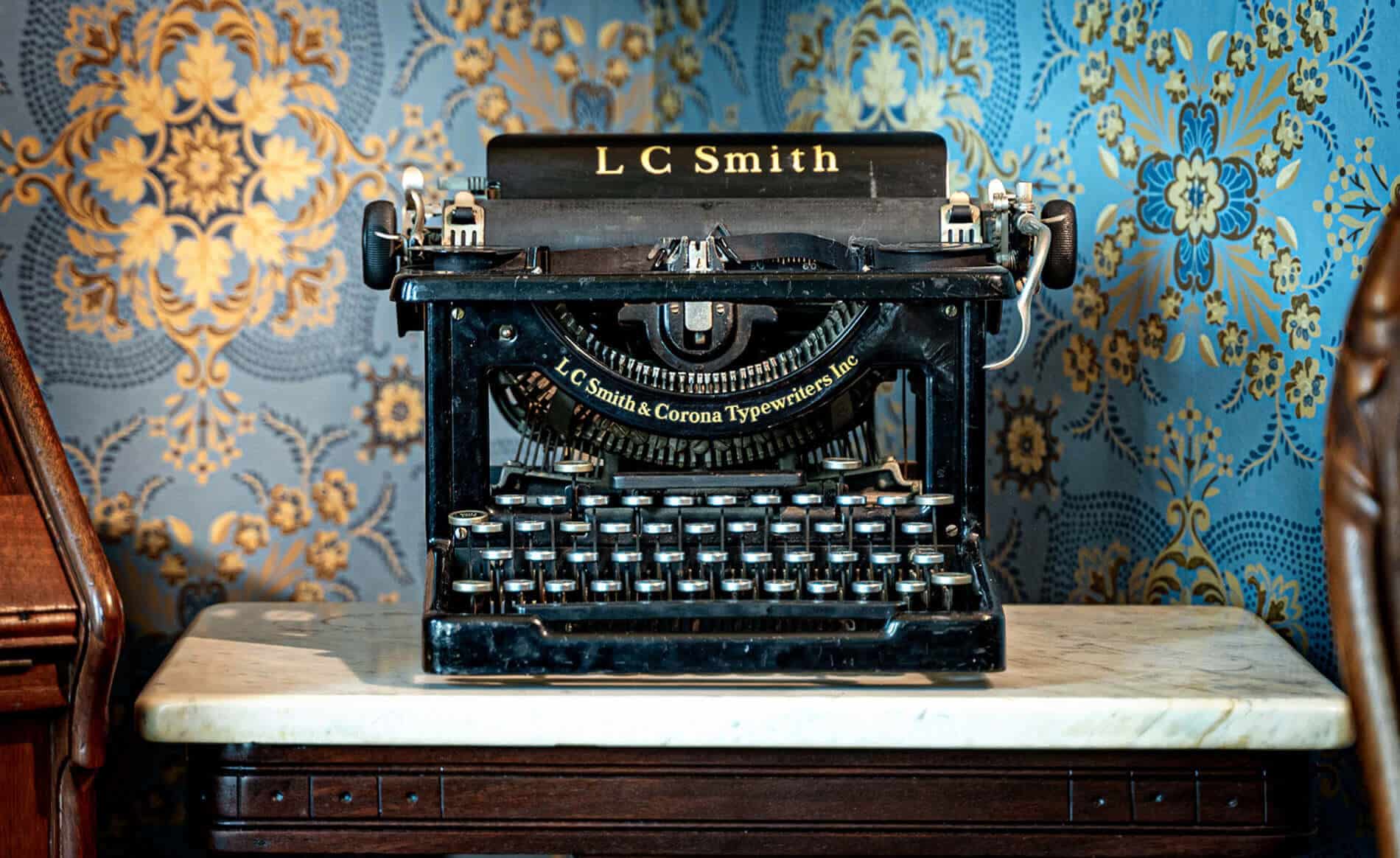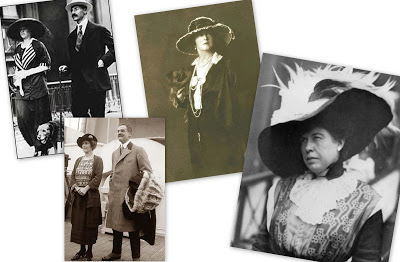Titanic was a grand ship, with grand passengers and when it came to dressing on the Titanic, most of the first-class passengers pulled out all the stops. In fact Lady Cynthia Asquith once said “It must be admitted that a very large fraction of our time was spent in dressing and undressing. We were forever changing our clothes, a custom that necessitated traveling with a mountain of luggage.”
Most of the first-class passengers did not travel lightly. Many of the American women on board the Titanic were even bringing the latest fashions from Paris home to the United States.
The first-class passengers dressed for breakfast, Men wore their blue blazers or light tweed or flannel suits with matching vests, the women in pale-colored light wool skirts, sometimes with a matching jacket, and a high-necked white blouse made of fine lawn cotton.
After breakfast the first-class passengers would attend church, if time permitted ladies would change their dresses, or some would just return to their staterooms and get their hats and gloves. After church ladies would change into the afternoon dresses or walking dresses.
Over-sized brimmed hats were the signature element of every outdoor outfit. Each hat was adorned with as much ribbon, feathers, lace, and jewels as a woman
could afford. Adornments were as much of a status statement as they were a
fashion statement.
could afford. Adornments were as much of a status statement as they were a
fashion statement.
For afternoon tea, ladies would wear hats and dress in their tea-gowns. Soft
silks and satins and penne and chiffon velvets were principally used for
the afternoon tea gown. It was a soft flowing robe often free of corsetry. Such loose gowns afforded women
great comfort, ease of access and a tremendous sense of femininity.
silks and satins and penne and chiffon velvets were principally used for
the afternoon tea gown. It was a soft flowing robe often free of corsetry. Such loose gowns afforded women
great comfort, ease of access and a tremendous sense of femininity.
At 6pm bugle called the first-class passengers to dress for dinner.
Gentlemen’s ‘White Tie’ formal wear consisted of a black tailcoat jacket
and pants, white waistcoat, silk top hat, and white bow tie. Unlike
modern suits the wool fabric was very thick and heavy. This kept the
shape very stiff and fitted meeting social requirements for pomp
sophistication. The cut of the tailcoat was very fitted to the body,
emphasizing a waist line at jackets edge. Special undergarments helped
shape a man’s belly much like corsets did for women. The jacket featured
pointed collars instead of shawl collars like in the previous decade.
The edge of the jacket bottom pointed downward a bit rather then
straight across. Although the jacket never buttoned close there were
three buttons placed on each side of the jacket opening.
and pants, white waistcoat, silk top hat, and white bow tie. Unlike
modern suits the wool fabric was very thick and heavy. This kept the
shape very stiff and fitted meeting social requirements for pomp
sophistication. The cut of the tailcoat was very fitted to the body,
emphasizing a waist line at jackets edge. Special undergarments helped
shape a man’s belly much like corsets did for women. The jacket featured
pointed collars instead of shawl collars like in the previous decade.
The edge of the jacket bottom pointed downward a bit rather then
straight across. Although the jacket never buttoned close there were
three buttons placed on each side of the jacket opening.
Edwardian fashion era shaped women
to be slimmer and taller, with emphasis of the bust and head. Corsets elongated
and flatted women’s waits down through the thighs. Walking in them forced a
slow almost hobble like gate.
Dresses were long and slender. Beaded or lace fabrics ended in a trail behind
the woman. Waists were high with a sash just under the breast line, ornamented
with jewels or silk flowers. Sleeves were usually long and gloves worn for
every occasion
“It was a brilliant crowd.
Jewels flashed from the gowns of the women. And, oh, the dear women,
how fondly they wore their latest Parisian gowns! It was the first time
that most of them had and opportunity to display their newly acquired
finery.” – Mrs. Jacques Futrelle
Join us to
celebrate the 100th Anniversary of this Titanic!
celebrate the 100th Anniversary of this Titanic!
701 East Taylor Street
Bloomington, IL 61701
Phone: 309.828.8816
Toll Free: 877.346.6488
Fax: 309.828.2596
Bloomington, IL 61701
Phone: 309.828.8816
Toll Free: 877.346.6488
Fax: 309.828.2596





